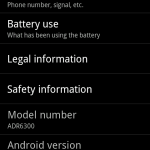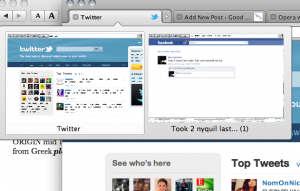1. Background check and root
If you haven’t yet, click here to read the guide on rooting your droid incredible.
2. Find some ROMs
The first thing you need to install a ROM would be the ROM itself (go figure).
If you have a droid incredible, I highly recommend downloading the fusion ROM from this post. Fusion is an extremely well-done and compatible ROM based off of CyanogenMod7 (another ROM), so you’ll get the dimension-opening power of 2.3.2 gingerbread.
If you don’t want this ROM, you can always do a google search. Not too hard, eh?
2. Download the ROMs
With the example I’m using (fusion), there are two ROMs. It includes first the base gingerbread ROM, but on top of that it also has a ROM for the Android Market, Gmail, YouTube, and Maps applications, as they do not come by default on the Android base operating system.
For now, I am only going to discuss installing the base, but for other ROMs it is sometimes the same situation with the two seperate ROMs. So later on I’ll discuss installing the gapps (dev talk for Google Apps).
There are two ways you can get the ROM to your device.
The first one involves your computer. Download the ZIP file(s) onto your desktop, then plug in your phone and move the zip(s) onto the root of your SD card.
The second way requires an app called Root Explorer (I discussed it in the guide to rooting). On the phone itself, use the web browser to download the ZIP file(s). Then, open up root explorer and navigate to the downloads folder (probably on your sdcard). Then, tap and hold the zip and select move. Navigate to the root of the sd card and tap paste. (Do this with the second ROM if you have one).
3. BACK UP!
This is an extremely important step to this, because if you forget to backup then you will never be able to restore your phone to the condition it was in when you rooted. That means that the HTC sense operating system that came on your phone will be GONE.
So, you’ll need to boot into recovery and backup.
Turn off your phone and turn it back on while holding the down volume button. It will boot into HBOOT, a diagnostics screen. Once it is done checking for update images on the SDcard, use the volume and power buttons to navigate to and select RECOVERY in the menu that you see.
It will show the HTC booting screen, but then boot into recovery (with very small fonts, I might add).
In this screen, scroll down and select backups (you can now use the optical trackball to do this). Then, select create a backup (or something like that).
It might take a while, but eventually a backup should be made of all of your stuff on your phone. So we shall now proceed to the next step.
Install the ROMS
Now is the fun part.
Boot back into the recovery screen by holding the down key and the power button at the same time.
Then, hit Wipe Data/Factory Reset.
This will wipe all of the data off of the phone.
WAIT WAIT WAIT! I STILL WANT MY BACKUPS!
Calm your caps lock keys, wiping the data from the phone doesn’t wipe out the sd card, which is where the backups are.
Now, select install zip from SD card.
Select choose zip from SD card
then, select the zip that you either downloaded or transferred over.
Then, select the yes, and magically, the ROM will install.
Wait a while, and it should be installed and working!
Upon first boot it will take a very long time to load. It has to configure everything and get it working. But every time you reboot the device the reboot time should be less and less until it is less than 30 seconds.
Anything else?
You might have downloaded 2 zip files to your SD card which you downloaded from the site that gives out the ROMs. This is probably because one of them is a Google Apps zip.
Make sure that before you move the two zips on to the sd card, you name them so you can tell which one is the base OS and which is the Gapps. (if you have no idea what I’m talking about, you need to click here and read up on your background info.) Make sure that first you install the Base OS zip, then, after it’s done, select Install zip from sdcard once again and select the gapps zip. Make sure that you don’t hit wipe data/factory reset, because what that will do is wipe out the base OS so you only have gapps and nothing to run it on. Not too functional if I may say so myself.
Where to find these ROMs?
As I said, the best ROM for the Droid Incredible at the moment is the Fusion ROM.
But there’s other ROMS too.
One of the most popular is CyanogenMod. They’ve been releasing ROMs with upgraded features since the dawn of time (or android).
However, after a little mixup with google, they are no longer allowed to have Gapps on their OS. So you’ll have an android phone with…. no android market. Or gmail. Or youtube. Have fun!
One of the easiest ways to find ROMS for your droid incredible is to just google it.
If you google Droid Incredible ROMs, a large amount of different websites will show up. If you are too lazy, here’s a direct link to that google search for ya. You’re welcome.













